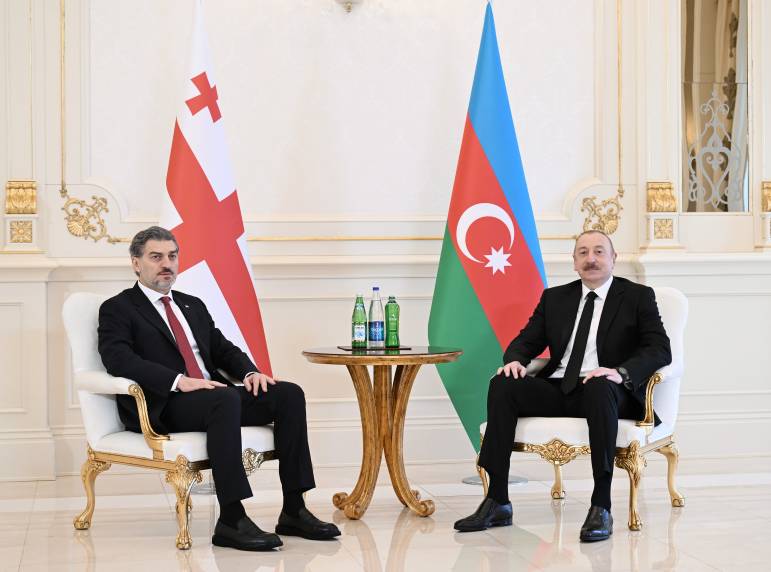20:15
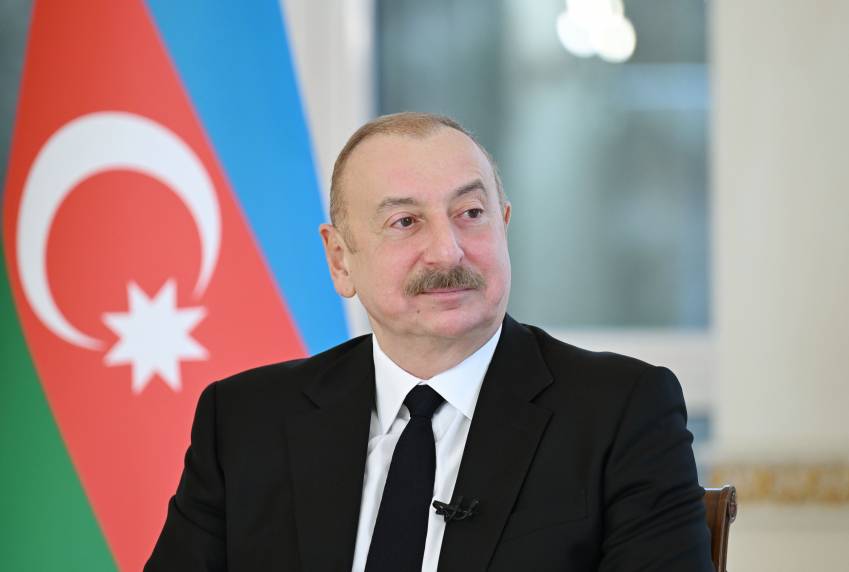
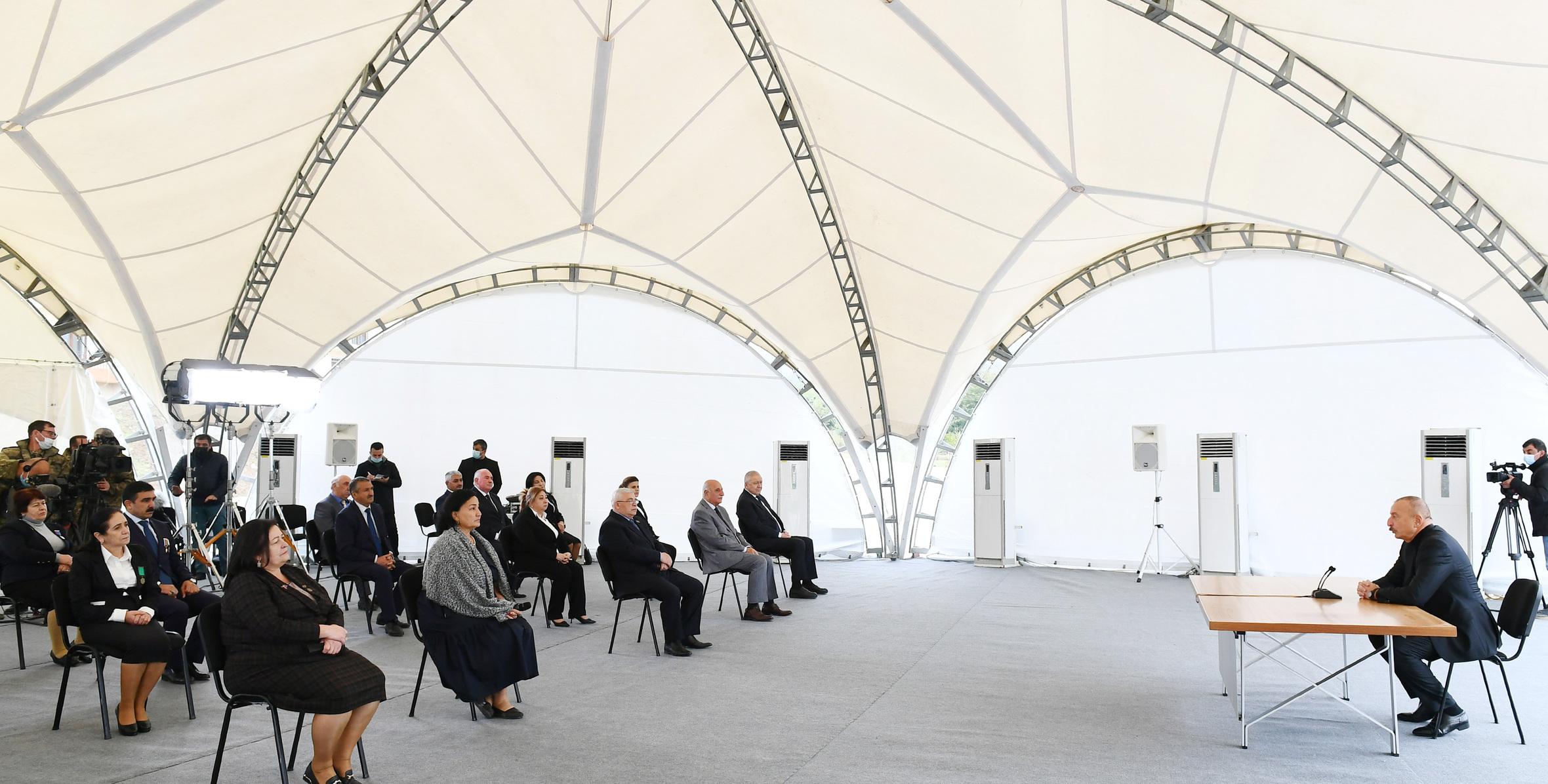
Dear friends, it is the first anniversary of the liberation of Hadrut settlement today. I sincerely congratulate you and the people of Azerbaijan on this occasion. I think that celebration of this day with you here in Hadrut is a remarkable event. After a long break, we have returned to Hadrut - Khojavand. We have returned through fighting, shedding blood and losing martyrs. May Allah rest the souls of all our martyrs in peace! It is at the cost of their blood, lives, the courage and heroism of our servicemen that we have restored historical justice, expelled the invaders from our native lands and returned here. it is a dawn of a new era for Hadrut and Karabakh in general.
The Hadrut operation is one of the most important ones during the Second Karabakh War. This operation was of critical both from a military and strategic point of view. The successful completion of this operation allowed us to achieve our goal of liberating Karabakh. Hadrut’s location in this region is crucial from a strategic point of view, because it is a mountainous area. The hills around the settlement provide control over a vast area, and it was quite challenging to liberate Hadrut from a military standpoint. At the same time, the liberation of Hadrut opened up new opportunities for the implementation of our plans. I must also say that although there were more than 10,000 defections in the Armenian army during the war and they rushed to flee some settlements, they put up strong resistance in Hadrut. The fierce fighting lasted here for several days. Nevertheless, they realized their feebleness in the face of Azerbaijani soldiers and officers and were defeated here as well.
The significance of the Hadrut operation is that the Armenian leadership and the Armenian army did not expect that we would advance towards Hadrut after Jabrayil. They thought that we would move in the direction of Fuzuli. Although they had a large contingent based in Hadrut, they did not expect us to come here. From a military point of view, the liberation of Hadrut required a great deal of self-sacrifice and professionalism. By conducting this operation, we once again showed our strength to Armenia and the whole world. We have shown that no one and nothing could stand in our way and that we would liberate all our lands at any cost.
The Azerbaijani public is well aware that there was a lot of false information in the Armenian media about the Hadrut operation. After we had already cleared all the mountains around Hadrut of the invaders, it became clear that the liberation of this settlement was simply a matter of time. We were determined to liberate the settlement with minimum losses, and we succeeded in doing that. The Armenian leadership and the Armenian defense ministry were claiming that the Armenians were still in control of Hadrut. They claimed that they had allegedly resorted to another tactical retreat and already returned to Hadrut by forcing the Azerbaijani soldiers out of Hadrut.
Seeing all these lies, I was simply amazed because it was crystal clear that Hadrut was already ours. I ordered that the Azerbaijani flag be raised in Hadrut to put an end to these lies by the Armenians. After that, after Azerbaijani soldiers and officers had raised our state flag in Hadrut and reported to me, the Armenian official propaganda admitted that Hadrut was under the control of the Azerbaijani Army.
It demonstrates yet again that the Armenian propaganda was based on lies during the occupation, during the war and in the post-war period. Their history, their past, their statehood and their mythology are nothing but fake. Armenians of the world have simply created the false impression in the countries where they live that the Armenian people have allegedly lived on these lands for centuries. The Armenians were resettled to Hadrut from Iran in the 19th century. Everyone knows that. There were no Armenians here prior to that. They fabricated the history and continue to falsify present realities. During the war, we heard many lies from the Armenian authorities. There was so much false, so much absurdity coming from their Ministry of Defense – it is probably worth changing its name to the ministry of falsehood – that the international experts and we were simply startled. The extent of lies about Hadrut had reached its peak. The liberation of Hadrut caused a profound moral and psychological shock in Armenia.
First of all, because they had believed that the Azerbaijani Army could never liberate Hadrut. Secondly, Hadrut was the administrative center of Hadrut district of the former Nagorno-Karabakh Autonomous Region. It was the center of the region. The Armenian leadership and the Armenian public had realized we made no distinction between our territories – whether it was Fuzuli, Jabrayil, Zangilan, Hadrut, Shusha or Sugovushan. The liberation of settlements of the former Nagorno-Karabakh Autonomous Region from the occupiers showed Armenia that we would not stop until Armenia undertakes to withdraw from all our lands, and we didn’t stop. After Armenia was ready to sign the act of capitulation and after we received information about that, we said that we would stop, and we did and returned the remaining districts by political means.
Therefore, the Hadrut operation was of great strategic, historical, moral and psychological importance. Today, the former Hadrut district of the former Nagorno-Karabakh Autonomous Region is completely free of the occupiers. After the war had ended, a special sabotage group was sent to some villages of Hadrut district from Shirak region of Armenia. In late November, they crossed the Lachin corridor and entered these areas. As you know, they were disarmed and arrested. Those who did not commit crimes were returned, while those who committed crimes and saboteurs had to answer in court. That is to say that about 20 days, after the war had ended and Armenia signed the act of capitulation, they tried to attack Hadrut again. But Azerbaijan’s Armed Forces took the necessary steps.
According to the administrative-territorial division of Azerbaijan, Hadrut settlement is a part of Khojavand district. By merging Hadrut and Martuni districts, which were once a part of the former Nagorno-Karabakh Autonomous Region, we merged them and created Khojavand district. I must also say that about 55-60 percent of the former Martuni district has been liberated from the occupiers and Azerbaijani citizens will return to those regions.
Looking at Hadrut settlement, everyone can see again that the Armenians did not consider these areas as their native land. After all, notice what state Hadrut is in. You have seen Hadrut, you have lived here, you have been here, and you have lived in nearby villages. There are representatives of several villages here. Nothing has changed here for almost 30 years. Two buildings have been constructed for the military and one school has been renovated. All other buildings remain the way they were. In other words, there was ubiquitous misery. They did not lift a finger. Notice the condition of roads and buildings. It begs a question as to how someone can live is in these buildings. One is tempted to ask a question: in 30 years the Armenian state has received millions of dollars in funds from the Armenians living abroad. They ran marathons every year, raising more than a hundred million dollars a year. Multiply that by 30 years and see how much money this adds up to. I am visiting all these regions now, I have been to Hadrut, many villages of Hadrut, the villages of Chanagchi and Sighnakh of Khojaly, Azikh, Tugh, Susanli and other villages – are of them all in a dilapidated condition. Our construction experts visited some villages and concluded that 95 percent of the buildings is in disrepair. But where did these billions go? It turns out that the Armenian leadership, its former leaders simply deceived the rich Armenians of the world, organized marathons and raised that money only to spend it the way they pleased.
They have a large foundation – Hayastan. For those who do not know, Hayastan actually means Armenia. I do not know why Hayastan is called Armenia in English and Russian, because Armenians call themselves Hays and their country is Hayastan, not Armenia. This is the work of historians. I know the reason for this, but Azerbaijani historians should probably do more research. As I said, this Hayastan foundation has probably raised several billion. Also, wealthy Armenians living in the United States have created their own special foundations for their family members. At least a few billion dollars have been raised in the last 30 years, and the fate of that money is unknown. If you look at all the liberated places, even where the Armenian population lived, there is no sign of development there. Look at the state of Shusha. They tried to portray Shusha as their city to the whole world, and they are still doing that today. If it was your city, then why is it is such a deplorable state? There is not a single new building in Shusha. There are two relatively new buildings. One belongs to the leader of the separatists and the other to another rich Armenian living abroad. They are villas, their own houses. There is not a single building there. All of the 17 springs in Shusha have been dried up. Well, if this is your city, then why is it in such a state?
Some of you here are from Tugh village. I will take you to Tugh village and you will see what state Tugh village is in now. I was shocked when I was there. They organized various festivals in Tugh every year. Visitors were attracted from abroad and the impression was created that it was a very developed place. It is in a run-down state, the school has collapsed, a community center has fallen apart, and almost all the buildings are obsolete. That is the true face of Armenian occupation.
They occupied our lands, subjected the Azerbaijani people to ethnic cleansing, destroyed all our houses, buildings and historical sites, but did not build a life for themselves. They wanted to continue the occupation for another 30 years. Both the international community and those involved with this matter turned a blind eye to that. We have put an end to it. I want to say again that the liberation of Hadrut a year ago can be considered a historic event. After that we continued our victory march in different directions. One direction was the direction of Fuzuli. Less than 10 days after the liberation of Hadrut, we liberated Fuzuli. The other direction was Shusha. The historic Victory Road also passed through the forests of Hadrut. So after the liberation of Fuzuli on 17 October, Armenia suffered even more serious blows because Jabrayil, Hadrut and Fuzuli, i.e. large settlements, were already liberated from occupation and everyone knows the further course of the war.
We will restore Hadrut. The master plan of Hadrut, its initial version has been submitted to me. I had many objections, so I did not bring that plan today. It needs to be elaborated further. But I believe that our architects will prepare a new plan in the next month. It will be submitted and we will approve it.
Today, the restoration of Hadrut has begun. The foundation of the highway has been laid. The four-lane Hadrut-Jabrayil and Hadrut-Fuzuli highways will be built, the Hadrut substation will be built. Its foundation stone has been laid and the construction of a mosque in Hadrut has begun. I have laid the foundation of the mosque too, and I think this is a historic event. In Soviet times, most of the people living in Hadrut were Armenians. They, of course, would not allow the construction of a mosque here. We all know that it was impossible to build a mosque in the Soviet era as a whole – in the era of atheism.
We are both restoring historical justice and showing our attachment to our religious and spiritual values. At the same time, the substation and road are among the key infrastructure projects, and other projects will be implemented as well. The historical part of Hadrut will be rebuilt. There are already preliminary images of the repaired buildings. At the same time, this messy landscape within the settlement is quite frustrating. It is hurts me to see this town in this condition today. Therefore, we are determined to turn Hadrut into an international culture and tourism center.
The main direction of the development of the settlement and Khojavand district will be agriculture – crop production, animal husbandry and viticulture. There were viticulture traditions here. There are very conducive conditions for viticulture here. Along with agriculture, it will be a very popular tourism center. The tourism potential of Khojavand district is enormous. It has a very rich nature – it has mountains, forests, rivers – a place like paradise. Historical sites, bridges, as well as the famous Azikh cave and the Taghlar cave – these are located here. The Armenians also wanted to Armenianize the Azikh cave. Can you imagine the degree of ridiculousness? They claimed that Armenians lived in the Azikh cave. One does not know whether to laugh at this or not. It was Azerbaijani archaeologists who discovered the Azikh cave. Those archaeologists did a lot of research, while Armenians simply brought scientists from several countries of the world for propaganda and staged a show here. The cave was severely damaged. Last time I was here, I went up to the entrance of that cave. I would like to invite Azerbaijani and foreign investors to build tourism centers and hotels in these places, which are so rich in historical sites. There are only a handful of such beautiful places in the world as Khojavand and Hadrut settlement. Pristine nature is almost intact here. Armenians cut down our forests in Kalbajar, Lachin and other places. About 60,000 hectares of forest in Kalbajar, Lachin and Zangilan districts have been completely destroyed, cut down and burned. It also happened in Jabrayil, but not here. Therefore, nature is almost untouched here. Also, there was virtually no population here. Hadrut may have been inhabited by a thousand people. There was no population. Therefore, we must preserve the pristine nature of this region. When our citizens return here, they should, first of all, pay attention to the protection of this nature, and, of course, the state will fulfill its responsibilities.
We have major plans related to the future development of Khojavand district and Hadrut settlement. We started implementing these plans today. Today, the people of Khojavand have come to their native lands and these visits will be more frequent.
I once again congratulate you on this historic day and wish you good health and continued success. Thank you.

Your Eminence,
We were deeply saddened to hear of the passing of His Holiness Pope Francis, Head of the Holy See and one of the most prominent religious figures of our time.
In the person of Pope Francis, the international community and the Catholic world have lost...
21 April 2025, 14:13I sincerely congratulate you and the entire Christian community of Azerbaijan on the sacred holiday of Easter, and I extend my wishes of happiness and well-being to all of you.
In Azerbaijan, which has rich traditions of tolerance, there has never been a case of...
18 April 2025, 16:25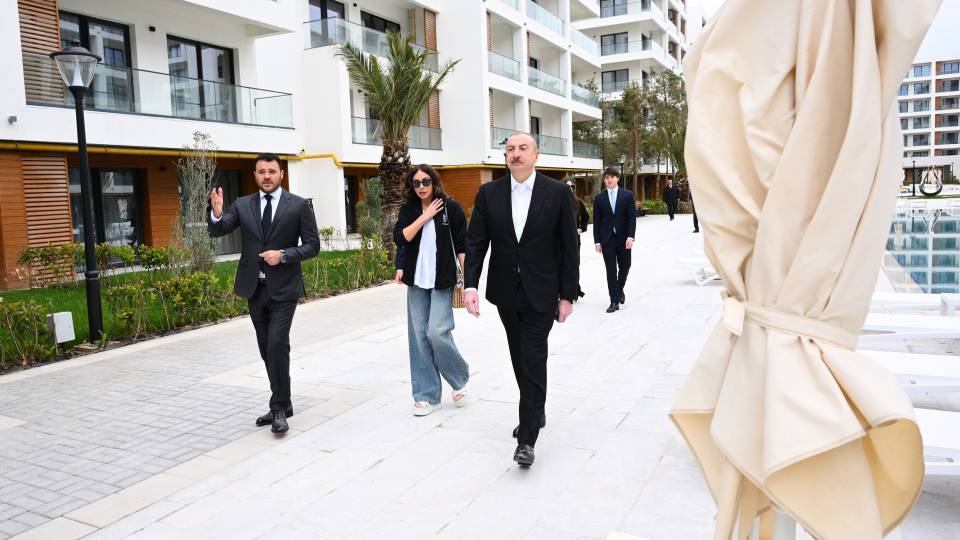
Dear Mr. Çavuşoğlu,
I was deeply saddened to learn of the passing of your father, Osman Çavuşoğlu — a profound loss for your family.
In this time of sorrow, I share in your grief and extend my deepest condolences to you and all the members of your family,...
18 April 2025, 12:37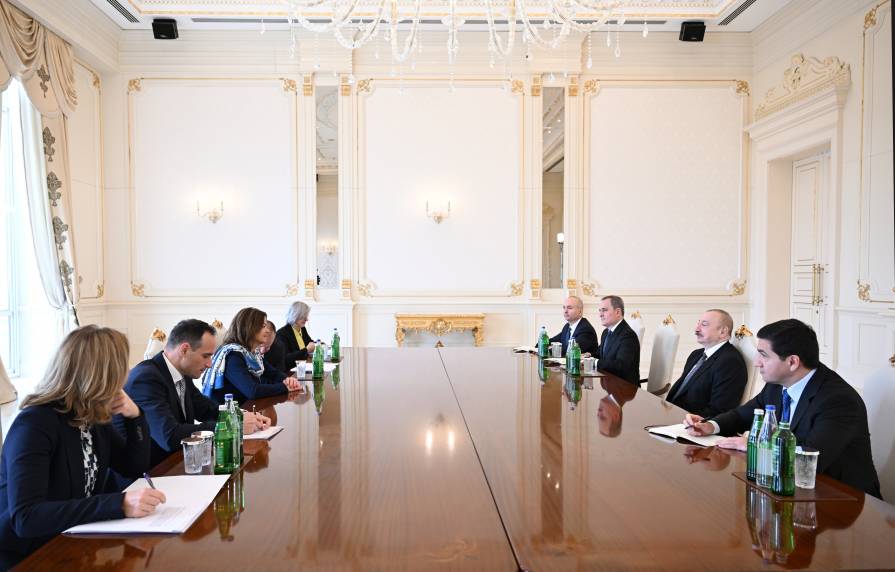
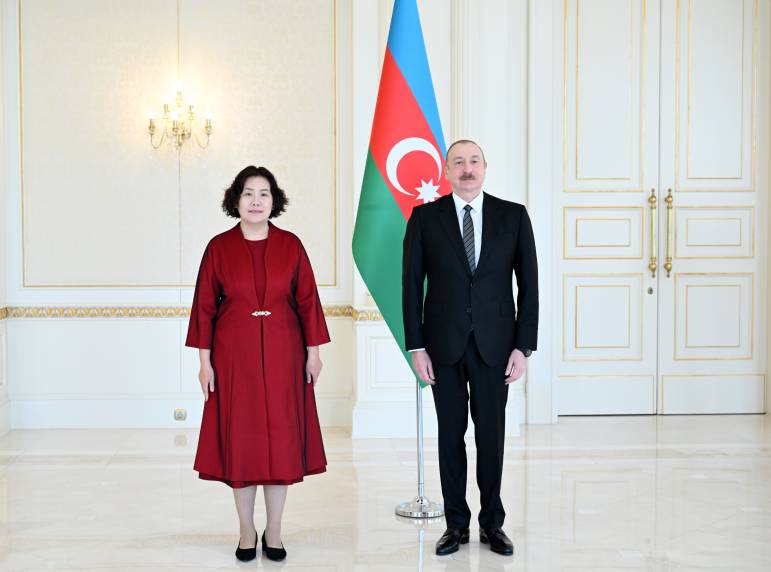
We were deeply saddened to learn of the passing of Richard Armitage – an eminent statesman, distinguished diplomat, dedicated public servant, and a great friend of Azerbaijan.
His years-long, productive service in international politics and diplomacy, coupled with...
16 April 2025, 18:06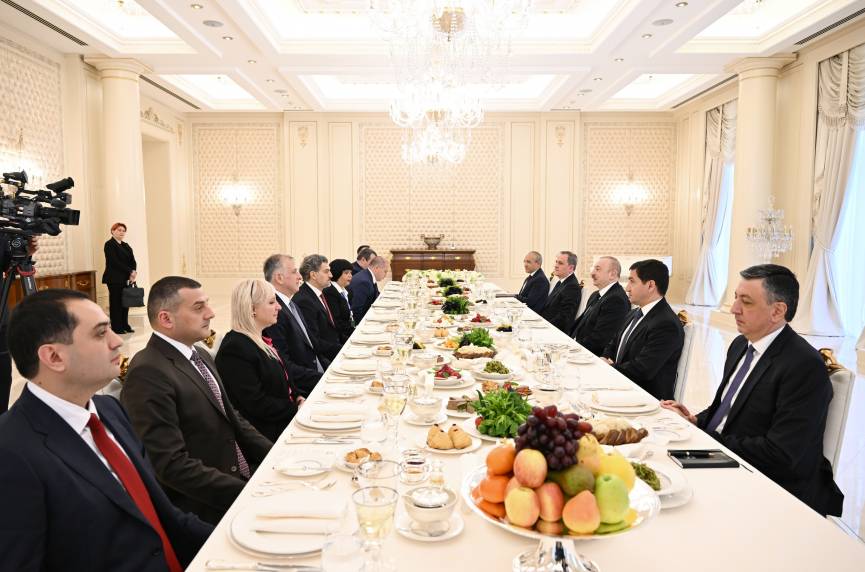
Statement by President Ilham Aliyev
- Dear Mr. President,
Dear guests,
Ladies and gentlemen,
Dear Mr. President, I would like to once again sincerely welcome you to Azerbaijan! I cordially congratulate you again on your election as a President and wish you ...
16 April 2025, 12:12